Shoulder Ligament
Table of Contents
Introduction
A shoulder ligament is a group of ligaments that help in stabilizing the shoulder joint. The shoulder joint is a ball-and-socket joint, which allows for a wide range of motion but also makes it more susceptible to injury and instability.
The shoulder joint ligament is composed of several ligaments, including the superior, middle, and inferior glenohumeral ligaments. These ligaments connect the humerus bone (upper arm bone) to the scapula (shoulder blade) and help to keep the joint in place during movement.
Ligaments of the shoulder joint
The shoulder joint ligament is a complex structure that consists of several ligaments that work together to stabilize the shoulder joint. These ligaments include:
- Superior Glenohumeral Ligament: This ligament is located at the top of the joint and helps to prevent excessive upward movement of the humerus bone.
- Middle Glenohumeral Ligament: This ligament is located in the center of the joint and helps to prevent excessive rotation of the humerus bone.
- Inferior Glenohumeral Ligament: This ligament is located at the bottom of the joint and helps to prevent excessive downward movement of the humerus bone.
- Coracohumeral Ligament: This ligament connects the coracoid process of the scapula to the humerus bone, providing stability to the joint.
- Transverse Humeral Ligament: This ligament holds the long head of the biceps tendon in place, preventing it from dislocating.
- Coracoacromial Ligament: This ligament connects the coracoid process to the acromion process of the scapula, forming a roof over the shoulder joint and preventing excessive upward movement of the humerus bone.
- Acromioclavicular Ligament: This ligament connects the acromion process of the scapula to the clavicle bone, providing stability to the joint.
- Glenoid Labrum: Although not a ligament, this structure is a ring of cartilage that surrounds the socket of the shoulder joint, providing additional stability to the joint.
Functions of the shoulder joint ligament
The shoulder joint ligament plays a crucial role in stabilizing the shoulder joint and allowing for smooth movement of the humerus bone. Each ligament has a specific function that works together with the others to provide stability to the joint.
The superior glenohumeral ligament helps to prevent excessive upward movement of the humerus bone, which can occur during overhead movements such as throwing a ball or reaching for an object on a high shelf.
The middle glenohumeral ligament helps to prevent excessive rotation of the humerus bone, which is important for maintaining proper alignment of the joint during movements such as reaching across the body.
The inferior glenohumeral ligament helps to prevent excessive downward movement of the humerus bone, which is important for maintaining stability during weight-bearing activities such as lifting heavy objects.
The coracohumeral ligament provides stability to the joint by connecting the coracoid process of the scapula to the humerus bone. This ligament also helps to limit excessive external rotation of the humerus bone.
The transverse humeral ligament holds the long head of the biceps tendon in place, preventing it from dislocating. This is important for maintaining proper alignment of the joint during movements that involve the biceps muscle.
The coracoacromial ligament forms a roof over the shoulder joint, preventing excessive upward movement of the humerus bone. This ligament also helps to protect the joint from impingement, which can occur when soft tissue structures become compressed between bones during certain movements.
The acromioclavicular ligament provides stability to the joint by connecting the acromion process of the scapula to the clavicle bone. This ligament is important for maintaining proper alignment of the joint during movements such as reaching overhead.
Finally, the glenoid labrum provides additional stability to the joint by forming a ring of cartilage around the socket of the shoulder joint. This structure helps to deepen the socket and provide a better fit for the humerus bone.
Injuries of the shoulder joint ligament
Injuries to the shoulder joint ligament can occur due to a variety of reasons, including trauma, overuse, and degenerative changes. The severity of the injury can range from mild sprains to complete tears, depending on the extent of damage to the ligament.

Superior Glenohumeral Ligament Injury: An injury to the superior glenohumeral ligament can result in instability of the shoulder joint, leading to pain and weakness during overhead movements. In severe cases, the humerus bone may dislocate from the socket, requiring immediate medical attention.
Middle Glenohumeral Ligament Injury: An injury to the middle glenohumeral ligament can cause pain and instability during movements that involve reaching across the body. This type of injury is common in athletes who participate in sports that require repetitive throwing or overhead movements.
Inferior Glenohumeral Ligament Injury: An injury to the inferior glenohumeral ligament can result in instability of the shoulder joint, leading to pain and weakness during weight-bearing activities such as lifting heavy objects. In severe cases, the humerus bone may dislocate from the socket, requiring immediate medical attention.
Coracohumeral Ligament Injury: An injury to the coracohumeral ligament can result in instability of the shoulder joint, leading to pain and weakness during movements that involve external rotation of the humerus bone. This type of injury is common in athletes who participate in sports that require repetitive throwing or overhead movements.
Transverse Humeral Ligament Injury: An injury to the transverse humeral ligament can result in instability of the biceps tendon, leading to pain and weakness during movements that involve the biceps muscle. This type of injury is common in athletes who participate in sports that require repetitive overhead movements.
Coracoacromial Ligament Injury: An injury to the coracoacromial ligament can result in impingement of the soft tissue structures in the shoulder joint, leading to pain and weakness during movements that involve raising the arm overhead. This type of injury is common in individuals who perform repetitive overhead activities such as painting or throwing.
Glenoid Labrum Injury: An injury to the glenoid labrum can result in instability of the shoulder joint, leading to pain and weakness during movements that involve raising the arm overhead. This type of injury is common in athletes who participate in sports that require repetitive overhead movements.
In the end, injuries to the humerus joint ligament can result in instability of the shoulder joint, leading to pain and weakness during a wide range of movements. Treatment for these injuries may include rest, physical therapy, and in severe cases, surgical intervention. It is important to seek medical attention if you suspect an injury to the humerus joint ligament to prevent further damage and promote proper healing.
Special test for shoulder joint ligament
There are several special tests that can be used to assess the integrity of the shoulder joint ligament. These tests are typically performed by a healthcare professional or physical therapist and involve specific movements or positions that place stress on the ligament in question. The following are some examples of special tests for different humerus joint ligaments:
Superior Glenohumeral Ligament Test: This test is performed with the patient lying on their back and the arm abducted to 90 degrees. The examiner then applies a downward force on the arm while stabilizing the scapula. A positive test is indicated by pain or apprehension in the patient, which may suggest a superior glenohumeral ligament injury.
Middle Glenohumeral Ligament Test: This test is performed with the patient sitting or standing and the arm adducted across the body. The examiner then applies an external rotation force on the arm while stabilizing the scapula. A positive test is indicated by pain or apprehension in the patient, which may suggest a middle glenohumeral ligament injury.
Inferior Glenohumeral Ligament Test: This test is performed with the patient lying on their back and the arm abducted to 90 degrees. The examiner then applies an anterior force on the humerus while stabilizing the scapula. A positive test is indicated by pain or apprehension in the patient, which may suggest an inferior glenohumeral ligament injury.
Coracohumeral Ligament Test: This test is performed with the patient sitting or standing and the arm adducted across the body. The examiner then applies a downward force on the arm while stabilizing the scapula. A positive test is indicated by pain or apprehension in the patient, which may suggest a coracohumeral ligament injury.
Transverse Humeral Ligament Test: This test is performed with the patient sitting or standing and the elbow flexed to 90 degrees. The examiner then applies an upward force on the forearm while stabilizing the humerus. A positive test is indicated by pain or apprehension in the patient, which may suggest a transverse humeral ligament injury.
Glenoid Labrum Test: This test is performed with the patient sitting or standing and the arm abducted to 90 degrees. The examiner then applies a downward force on the arm while stabilizing the scapula. A positive test is indicated by pain or clicking in the shoulder, which may suggest a glenoid labrum injury.
Treatment of the shoulder joint ligament
The treatment of shoulder ligament injuries depends on the severity and extent of the injury. Mild injuries may only require rest, ice, and over-the-counter pain medication, while more severe injuries may require surgery or physical therapy.
Conservative treatment options for shoulder ligament injuries may include:

- Rest: Avoid activities that aggravate the injury and allow time for the ligament to heal.
- Ice: application of ice to the affected area can help reduce pain and swelling.
- Compression: Wrapping the affected area with an elastic bandage can help decrease swelling and give support.
- Elevation: Elevating the affected limb above the heart level can help reduce swelling.
- Pain medication: Over-the-counter pain medication such as acetaminophen or ibuprofen can help in relieving pain and decrease inflammation.
Physical therapy may also be recommended to help improve the range of motion, strength, and flexibility in the affected joint. A physical therapist may use a variety of techniques such as stretching, strengthening exercises, and manual therapy to help improve joint function and reduce pain.
In cases of severe ligament injuries, surgery may be necessary to repair or reconstruct the damaged ligament. This may involve using a graft from another part of the body or a synthetic material to replace the damaged ligament.
Recovery time for shoulder ligament injuries can vary depending on the severity of the injury and the type of treatment used. While more serious wounds may take many months to fully recover, minor wounds may take a few weeks to heal. It is important to follow the recommended treatment plan and avoid activities that may aggravate the injury during the recovery process.
Physiotherapy treatment of the shoulder joint ligament
Physiotherapy treatment for shoulder ligament injuries may include a combination of exercises, manual therapy, and modalities to help improve joint function, reduce pain, and promote healing. The following are some common physiotherapy techniques used for shoulder ligament injuries:
- Range of motion exercises: These exercises useful in improving joint mobility and flexibility. A physiotherapist may guide the patient through gentle stretches and range of motion exercises to help improve joint function.
- Strengthening exercises: Strengthening exercises help improve muscle strength and stability around the affected joint. A physiotherapist may prescribe exercises that target specific muscles around the shoulder joint to help improve joint stability.
- Manual therapy: Manual therapy techniques such as massage, joint mobilization, and manipulation may be used to help reduce pain and improve joint mobility.
- Modalities: Modalities such as heat, ice, ultrasound, and electrical stimulation may be used to help reduce pain and inflammation and promote healing.
- Functional training: Functional training involves practicing activities of daily living that are specific to the patient’s needs and goals. A physiotherapist may work with the patient to develop a customized exercise program that includes functional training to help improve joint function and reduce the risk of future injuries.
The duration and frequency of physiotherapy treatment will depend on the severity of the injury and the patient’s individual needs. It is important for patients to follow their physiotherapist’s recommended treatment plan and attend all scheduled appointments to achieve the best possible outcomes.
Risk factors of the shoulder joint ligament
- Age: Ligament injuries, including those in the shoulder, become more common as we age. This is because ligaments tend to lose their elasticity and become weaker over time.
- Sports and physical activities: Participation in certain sports or activities that involve repetitive or excessive overhead movements can increase the risk of shoulder ligament injuries. Examples include baseball, tennis, swimming, weightlifting, and throwing sports.
- Overuse and repetitive strain: Repeatedly performing overhead motions or repetitive strain on the shoulder joint can put stress on the ligaments, leading to injury. This is commonly seen in athletes who engage in repetitive throwing or overhead motions.
- Trauma or accidents: Sudden falls, direct blows to the shoulder, or other traumatic events can cause ligament injuries in the shoulder joint. These injuries may occur during sports, accidents, or high-impact activities.
- Poor posture and muscle imbalances: Weakness or imbalances in the muscles surrounding the shoulder joint can affect its stability and increase the risk of ligament injuries. Poor posture, such as rounded shoulders or forward head position, can also contribute to shoulder instability.
- Previous injuries: If you have previously experienced a shoulder injury or ligament tear, there is an increased likelihood of re-injury or developing further ligament problems.
- Genetics and anatomical factors: Some individuals may have certain genetic factors or anatomical variations that predispose them to ligament injuries. These factors can include joint laxity (looseness), shallow shoulder sockets, or abnormal ligament structure.
How to prevent shoulder joint ligament injuries
To prevent shoulder ligament injuries, there are several steps that can be taken:
- Maintain good posture: Poor posture can put additional stress on the shoulder joint and increase the risk of injury. It is important to maintain good posture throughout the day, especially when sitting or standing for extended periods.
- Avoid overuse of the shoulder joint: Repetitive overhead movements, such as those performed in sports like baseball or tennis, can put excessive strain on the humerus ligament and increase the risk of injury. It is important to avoid overuse of the shoulder joint and take breaks when needed.
- Engage in regular exercise: Regular exercise can help strengthen the muscles surrounding the shoulder joint and reduce the risk of injury. Exercises that focus on the rotator cuff muscles, such as external rotations and scapular retractions, can be particularly beneficial.
- Use proper technique: When engaging in activities that involve the shoulder joint, such as weightlifting or throwing a ball, it is important to use proper technique to avoid putting undue stress on the humerus ligament.
- Stretch before and after exercise: Stretching before and after exercise can help improve flexibility and reduce the risk of injury. Focus on stretching the muscles surrounding the shoulder joint, such as the rotator cuff muscles and the chest muscles.
- Seek prompt medical attention for any pain or discomfort: If you experience any pain or discomfort in your shoulder, it is important to seek prompt medical attention. Early intervention can help in preventing further damage and promote healing.
By taking these steps, you can reduce your risk of shoulder ligament injuries and maintain good shoulder health.
FAQs
Shoulder ligaments are strong bands of connective tissue that attach bones to bones in the shoulder joint. They provide stability and support to the joint, allowing for a wide range of motion.
There are four main ligaments in the shoulder joint: the coracoclavicular ligament, the acromioclavicular ligament, the glenohumeral ligament, and the coracoacromial ligament.
Shoulder ligament injuries can be caused by a variety of factors including trauma, overuse, repetitive strain, and degeneration due to aging or disease.
Symptoms of a shoulder ligament injury may include pain, swelling, stiffness, weakness, instability, and limited range of motion.
Shoulder ligament injuries are typically diagnosed through a physical exam, medical history review, and imaging tests such as X-rays, MRI scans, or CT scans.
Treatment for shoulder ligament injuries may include rest, ice, compression, elevation, physical therapy, medications, and in severe cases, surgery.
Shoulder ligament injuries can be prevented by maintaining good posture, practicing proper lifting techniques, using protective gear during sports and activities, and avoiding repetitive overhead motions.

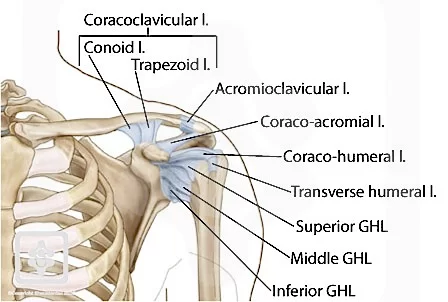

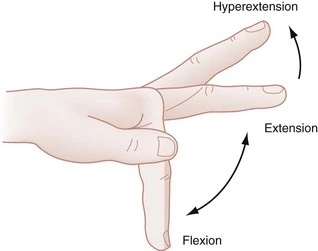
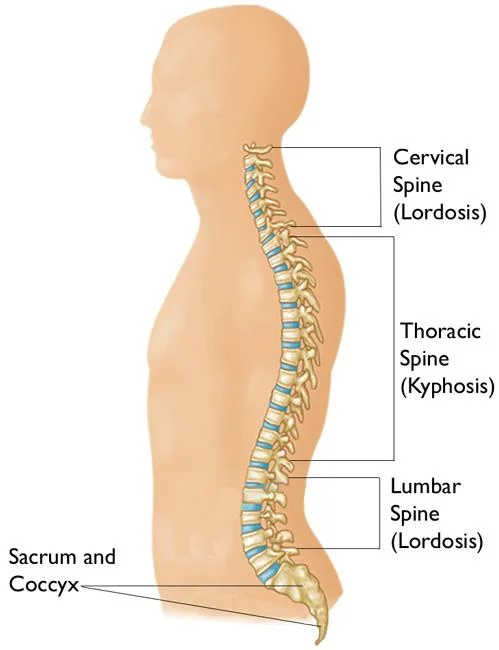
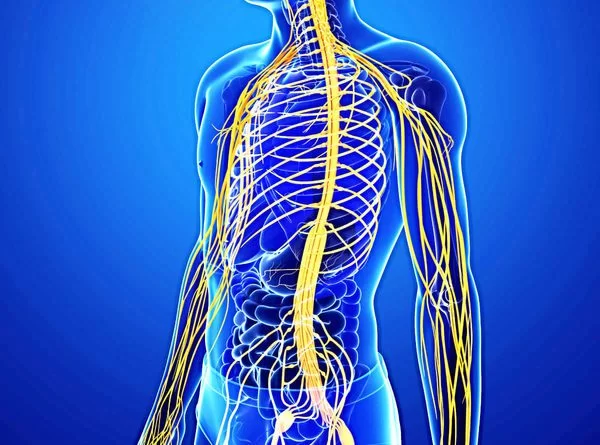
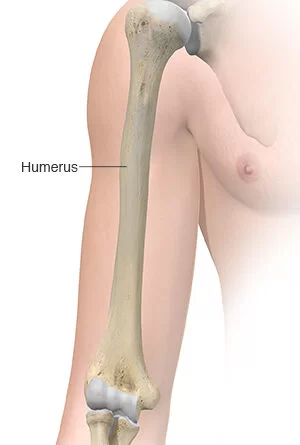
One Comment